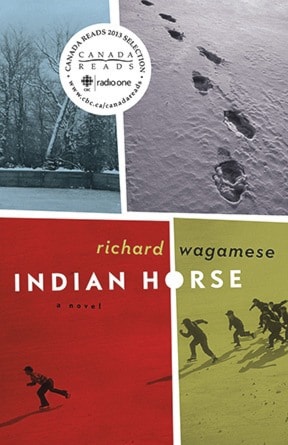Nearly one-and-a-half years since the implementation of district-wide professional learning community (PLC) time in Comox Valley schools, the Comox Valley Record looks at a couple of examples of the work being done by staff at the elementary and secondary levels. The purpose of PLC time is to give staff designated time to work collaboratively on inquiry projects designed to improve student learning. In Part 1 of the series, the secondary level work is explored.
Renee Andor
Special to the Record
G.P. Vanier Secondary teacher Dave Miller’s PLC group this year is investigating the idea of using culturally significant books to build empathy and resiliency in students.
“What we mean by that is ... things that kids can read to gain a greater appreciation or understanding of what happened in the past, which will help them make decisions and maybe change their ideas or attitudes about the way they approach the future,” says Miller.
Ice hockey as an escape
He introduced the novel Indian Horse by Richard Wagamese to his students in the G.P. Vanier Hockey Academy program (Grade 9-12), which includes ice hockey and English among other classes.
He says the book was a good fit for his students because it’s about a First Nation boy’s journey through the residential school system, and how ice hockey became a kind of escape from the horror he was living through.
District aboriginal curriculum support teacher Ken Lees jumped on board to help Miller and came into the class periodically to contribute.
“During the reading of the book, Ken and I would read to the kids and they would ask questions,” says Miller, noting he could expand on the aspects of hockey covered in the book and Lees could give insight on the residential school system.
Lees adds: “I told them right off the bat, ‘You can ask anything, be as blunt as you want,’ and they were. They asked some pretty good questions, questions that I thought they probably had for a long time.”
Miller continues: “And I think the fact that they’re asking those questions, and they’re in a position to ask those questions, is really helpful for everybody ... It’s sort of part of a healing process.”
Visit to a sweat lodge
The students are now finished the novel and Lees notes the next step in the project, (in the new year), will see the class go to a sweat lodge, something he points out is about healing, too.
“The sweat ceremony is a healing ceremony. You go into the sweat one way and you’re reborn a better person afterwards,” he says, adding he will have an elder come to the class before students do the sweat ceremony to provide information about sweats, like the protocols and why they’re done.
Students will also have time for reflection, adds Miller, noting they will look at how their feelings or perceptions about residential schools and First Nations people may have changed.
“When we take part in something (like this project), not only are we busting stereotypes and hopefully decreasing racism, we’re also coming together in a holistic manner,” says Miller. “I think that feeds into healing and understanding.
“The kids really are fresh still, they’re just kids still. So, by having a group like this take part, they’re going to leave with a better understanding of the world and I think they’re going to be better people for it.”
Student engagement key
Other teachers in Miller’s PLC group are using other culturally significant reading material in their own classrooms.
“What’s great about PLC time is that you get time to collaborate and you’re not running off your feet,” he says. “You’re trying to do something to engage the kids — rather than just chalk and talk or present information to them, we want the kids to be a part of the process — and so we need to collaborate and spend time to figure out how can we make this interesting, how can we make this engaging.”
For more information about PLC time in the school district, visit www.sd71.bc.ca.
